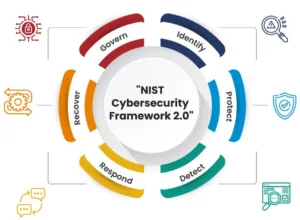
Table of Contents
In a world dominated by digital interactions, safeguarding your identity has become more crucial than ever. The rise of impersonation attacks poses a constant threat, with cybercriminals employing increasingly sophisticated methods to exploit vulnerabilities and gain unauthorized access to personal information.
This blog post aims to empower you with practical strategies to fortify your digital defenses and protect against impersonation attacks, ensuring that your identity remains secure in the vast online landscape.
Understanding Impersonation Attacks
Impersonation attacks come in various forms, but they all share a common goal: deceiving individuals by mimicking legitimate entities. Cybercriminals may pose as trusted institutions, colleagues, or even friends to manipulate individuals into divulging sensitive information or taking harmful actions.
Recognizing the gravity of this threat is the first step towards implementing effective protective measures.
Stay Informed: The Power of Knowledge
Knowledge is your greatest ally in the battle against impersonation attacks. Keeping yourself informed about the latest scams and techniques employed by cybercriminals is crucial. Subscribe to reputable cybersecurity newsletters, follow updates from authoritative sources, and stay abreast of emerging threats.
Awareness is your first line of defense, enabling you to spot potential threats and take proactive measures.
Secure Your Online Presence
Your online presence is the gateway to your digital identity, making it a prime target for impersonation attacks. Strengthening your online security involves adopting robust authentication practices:
- Strong Authentication: Use strong, unique passwords for each of your accounts. Consider implementing multi-factor authentication (MFA) wherever possible. This additional layer of security significantly enhances your defense against unauthorized access.
- Regularly Update Credentials: Change passwords periodically, especially after security incidents or if you suspect any compromise. Ensure that your recovery options, such as email addresses and phone numbers, are up-to-date.
Verify Communications: Trust, but Verify
Impersonators often exploit communication channels to deceive individuals. To protect yourself:
- Check Sender Information: Scrutinize the sender’s email address or phone number. Pay attention to subtle misspellings or variations that might indicate a phishing attempt.
- Hover Over Links: Before clicking on any links, hover your mouse over them to preview the destination URL to see the link. If it appears suspicious, refrain from clicking suck links.
- Confirm Requests: When receiving requests for sensitive information, independently verify their legitimacy by reaching out to the supposed sender through a trusted communication channel.
Educate Yourself and Others: Empowerment Through Knowledge
Educating yourself and those around you is a potent weapon against impersonation attacks. Equip yourself and others to:
- Recognize Social Engineering Tactics: Familiarize yourself with common social engineering tactics like pretexting, phishing, and baiting. Understanding the red flags is essential to recognizing potential threats.
- Question Unusual Requests: If a request seems unexpected or unusual, independently verify its legitimacy before taking any action. A healthy dose of skepticism can go a long way in thwarting impersonation attempts.
Secure Your Devices and Networks: Fortifying Your Digital Fortress
Your devices and networks serve as the frontline of defense against impersonation attacks. Strengthen your defenses by:
- Use Security Software: Install good antivirus and anti-malware software on your devices. Keep these tools updated to ensure protection against the latest threats.
- Encrypt Communications: Utilize encrypted communication channels, especially when handling sensitive information. Encryption adds an extra layer of security to your digital interactions.
Monitor Financial Activity: Vigilance in Action
Financial accounts are often prime targets for impersonation attacks. Stay vigilant by:
- Regular Monitoring: Check your financial statements regularly for any unauthorized transactions. Set up alerts for suspicious activities on your accounts. Swift detection of unauthorized access enables prompt corrective action.
Conclusion: Empowerment Through Proactive Measures
Safeguarding your identity against impersonation attacks is not a one-time task; it’s an ongoing process that requires vigilance and awareness. By staying informed, securing your online presence, verifying communications, educating yourself and others, and fortifying your devices and networks, you can significantly reduce the risk of falling victim to impersonation attacks.
In the ever-evolving landscape of cybersecurity, an ounce of prevention is indeed worth a pound of cure. Stay safe, stay informed, and take control of your digital identity.
By implementing these practical strategies, you empower yourself to navigate the digital world confidently, knowing that your identity is secure from the threat of impersonation attacks.
Read more on https://cybertechworld.co.in for insightful cybersecurity related content




















Your point of view caught my eye and was very interesting. Thanks. I have a question for you.
Your article helped me a lot, is there any more related content? Thanks!
Thanks for sharing. I read many of your blog posts, cool, your blog is very good.